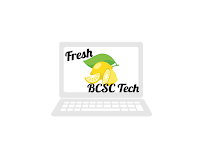Banana bread has become THE food of the quarantine. If you've spent time on social media during the global pandemic, you've probably seen many pictures of hopeful chefs baking their first or fifteenth banana bread while spending time at home. The recipe is relatively simple, healthy-ish, and makes good use of past ripe bananas. Imagine you've gotten the task to bake a loaf of banana bread (in the spirit of quarantine cooking). All of the ingredients to bake the bread are readily available to you. How do you feel about the task at hand?
Perhaps you are a banana bread baker extraordinaire and have mastered the art of breadmaking during the past several months social distancing at home. Maybe instead, you feel excited but a little anxious because while you are certain that you can conquer the task at hand, you may not have had much experience in the past. On the other hand, perhaps you are nervous about the task at hand because you have never made banana bread before.
Let's keep those emotions in mind-what if I gave you a few tools to help you complete the banana bread baking task? Such as, a whisk and an old recipe handwritten in cursive. How do you feel about the task at hand now that you've received some tools?
Have your feelings towards the task at hand changed? Improved? Worsened?
Odds are, even if you are a banana bread expert, the minimal tools provided probably present significant barriers to reaching the goal at hand. Whisks are not the most appropriate tool for mixing ingredients in some recipes, and cursive handwriting may be difficult for some to read. We would most likely vary in what tools we would need to be successful in this task. Experienced bakers may feel comfortable with minimal tools and guidance while others may feel more confident with a video tutorial of the recipe, several measuring cups, and mixing utensils.
So, how on Earth does this connect to teaching and learning?
When we design our lessons, we need to consider our learners' needs and what tools they'll need to reach learning goals (or tasks). We also need to ensure that the tools we provide them are relevant, usable, and accessible. What may be a helpful tool for one learner may not be beneficial for another. Much like one individual with experience in making banana bread may accomplish the goal with a whisk, another may need different tools to reach the same bread baking goal. When we think about our learning environment, much like our banana bread skills, variability is the norm, not the exception. By only providing a couple of tools-a handwritten recipe and a whisk-we created significant barriers for our bakers. If we only provide our students with one tool to reach a learning goal, what problems does that create? A one-size-fits-all approach is not fit for all.
Similarly, the tools provided must be accessible or usable for the learners as well. A handwritten recipe may work for a baker who has experience reading in cursive, but may present challenges for a cook who thrives with audio, video guides. Options help address, support, and celebrate our learners' differences. However, to truly help learners thrive, the possibilities, tools, and resources need to be flexible so that they champion accessibility.
Why:
In the United States, there are roughly 6.7 million K-12 children with disabilities receiving special education services (National Center for Learning Disabilities). This data means that approximately 6 million children in the United States have learning needs that cannot be remedied by typical study strategies or assessments. As our understanding and awareness of learning disabilities grow, experts estimate that millions more children with learning and attention issues have not been formally identified to receive special education services, indicating the number of learners with disabilities may be even higher than what is reported. The data indicates that millions of students in our classrooms have learning needs that cannot be remedied by typical study strategies and assessments. The need for accessible materials and supports is a requirement to support our students with special education services and benefits the growing number who may not be identified to receive services. Accessibility is the law. However, the importance of accessibility transcends the mere checking of a box for legal purposes. Accessibility creates opportunities for ALL learners and builds an inclusive environment. By championing accessibility from the onset, educators are championing diversity and a sense of belonging for all.
Accessibility does not just benefit people with disabilities. Consider- curb cut-outs on sidewalks help those who are in wheelchairs or who may struggle to step up onto a curb use the sidewalk, enter buildings, and more. However, this does not mean that you have to be in a wheelchair to use a ramp or curb cut-out. We can all use and benefit from this feature. The same applies to our learning environment. For example, accessible videos with closed captions can help students who may be deaf or hard of hearing, but are also helpful to an ELL student, a student who is trying to watch a video in a noisy place, or a student who feels he or she can maintain a better focus if written text accompanies the video content. Inaccessible materials, on the other hand, such as a video only option with closed captions, have the opposite effect-they create a learning environment where the benefits are few.
UDL, Choice, and Accessibility
As more learning continues to go more digital, it is increasingly important that the digital tools, resources, and materials provided to students are accessible. Technology can be a powerful resource for making learning activities, experiences, content, and material more engaging and accessible for our learners. However, without proper planning and a research-based instructional framework to guide its implementation, technology has the potential to become a source of disengagement for our learners and actually contribute to inaccessibility. Universal Design for Learning (UDL) is a research-based framework that can help teachers check for accessibility and guide the use of technology, digital content, and digital content creation in the classroom. A core value of UDL is focusing on the "goal" of the lesson. By focusing on the lesson goal first, not the tech, we can ensure that we are integrating technology and digital tools as a means to support reaching a goal rather than integrating technology into a lesson for its own sake.
Furthermore, another way to improve accessibility is to provide learners with choice in learning resources and activities. A core tenet of Universal Design for Learning (UDL) is providing learners with choices to boost engagement, representation, and action. For instance, giving a choice in learning resources (representation)-perhaps between a closed-captioned video and a reading-provides learners with multiple ways to develop an understanding of content, whereas a video only or text only option may create barriers for some. Providing choice in learning activities can also create a more accessible environment. If the learning goal is content-focused, learners can showcase their understanding of the material in multiple ways-video, audio, illustration, text, 3D models, or more. Providing too many options can overwhelm students and disengage, but providing a few optimized options can help ensure more pathways to mastery. For more information on UDL, visit the UDL Guidelines website by CAST.
In addition, when providing choices in the learning environment, UDL can help teachers plan for accessible choices. The UDL checkpoints can be a lens to test for accessibility because the checkpoints remind us to consider what (and if) a tool provides audio, video, and physical supports.
Providing accessible resources, however, does not necessarily mean hours more work or more cost. Many tried, and true educational technology companies continue to expand features that incorporate assistive technologies and accessibility resources.
In the next series of blog posts, we will explore some of the features within Chrome, G-Suite, and Google that can be used to improve accessibility of digital resources.
Education and accessibility go hand in hand- you cannot truly provide a proper education all students without guaranteeing that all students can make full use of materials, digital tools, and resources.
1. National Center on Accessible Education Materials, http://aem.cast.org/creating/accessibility-standards-specifications-guidelines.html
2. National Center for Learning Disabilities, https://www.ncld.org/research/
3. Universal Design for Learning, http://udlguidelines.cast.org/?utm_medium=web&utm_campagin=none&utm_source=cast-home
4. Banana bread image courtesy of Klara Avsenik from Unsplash Images.



Comments
Post a Comment